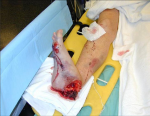A Road to Patient Satisfaction?
The rise in the medical home concept started over the last six years has been driven by the growing shortage of primary care clinicians and the increase prevalence of chronic diseases.
And, medical home adoption has risen from 49 percent in 2006 to 79 percent in 2009 to 86 percent in 2012, according to 95 healthcare companies who completed the sixth annual Healthcare Intelligence Network survey on Patient Centered Medical Homes (PCMH).
The Survey
When asked in 2006, only 33 percent of respondents were trying to establish a medical home.
However, by 2012, 52 percent have established medical homes for their populations including 59 percent of existing medical homes are now or soon will be part of an accountable care organization (ACO). With the rise of patient centered medical homes, ACOs and other emerging healthcare delivery models, healthcare organizations will need to engage patients in ways that increase quality, reduce cost and improve their overall healthcare experience.
Assessment
Healthcare Intelligence Network also created the infographic shown below to accompany the survey highlighting following key areas in medical home adoption from 2006 to 2012:
- Top three ways to educate and engage patients in the medical home
- Barriers to patient centered medical home adoption
- Time for medical home conversion
- Climbing of patient satisfaction rates
- Top health IT tools adoption
Conclusion
Your thoughts and comments on this ME-P are appreciated. Feel free to review our top-left column, and top-right sidebar materials, links, URLs and related websites, too. Then, subscribe to the ME-P. It is fast, free and secure.
Link: http://feeds.feedburner.com/HealthcareFinancialsthePostForcxos
Speaker: If you need a moderator or speaker for an upcoming event, Dr. David E. Marcinko; MBA – Publisher-in-Chief of the Medical Executive-Post – is available for seminar or speaking engagements. Contact: MarcinkoAdvisors@msn.com
OUR OTHER PRINT BOOKS AND RELATED INFORMATION SOURCES:
- DICTIONARIES: http://www.springerpub.com/Search/marcinko
- PHYSICIANS: www.MedicalBusinessAdvisors.com
- PRACTICES: www.BusinessofMedicalPractice.com
- HOSPITALS: http://www.crcpress.com/product/isbn/9781466558731
- CLINICS: http://www.crcpress.com/product/isbn/9781439879900
- ADVISORS: www.CertifiedMedicalPlanner.org
- BLOG: www.MedicalExecutivePost.com
- FINANCE:Financial Planning for Physicians and Advisors
- INSURANCE:Risk Management and Insurance Strategies for Physicians and Advisors
Our Newest Textbook Release

Learn How to Profit and Thrive in the PP-ACA Era
Filed under: Health Economics, Practice Management | Tagged: Accountable Care Organizations, ACOs, Healthcare Intelligence Network, Patient Centered Medical Homes |



















SGR Jitters Deter Physicians From New Medicare Pay Models
Uncertainty about a 27% cut in Medicare reimbursement scheduled for January 1 is deterring 54% of physician practices from participating in Medicare experiments to eventually replace fee-for-service payment, according to a new survey released yesterday by the Medical Group Management Association (MGMA).
However, 30% of practices would be much more likely to embrace reform-minded models of payment and delivery — and 52% somewhat more likely — if Congress passed legislation stabilizing Medicare reimbursement for 5 years. The new Medicare models include accountable care organizations and patient-centered medical homes, as well as reimbursement methods such as bundled payments and shared savings.
Source: Robert Lowes, Medscape News [10/23/12]
LikeLike
PCMHs
What comes to mind when you hear the term “medical home?” Perhaps you favor the definition put forth by our government (AHRQ):
The medical home model holds promise as a way to improve health care in America by transforming how primary care is organized and delivered. Building on the work of a large and growing community, the Agency for Healthcare Research and Quality (AHRQ) defines a medical home not simply as a place but as a model of the organization of primary care that delivers the core functions of primary health care.
http://pcmh.ahrq.gov/portal/server.pt/community/pcmh__home/1483/PCMH_Defining%20the%20PCMH_v2
Dr. David Edward Marcinko MBA
http://www.CertifiedMedicalPlanner.org
LikeLike
Another [my] Patient-Centered Medical Home Definition
The concept of Patient-Centered Medical Home is an innovative way to improve primary care for patients.
With it, a team of healthcare providers work together to ensure the patient has access to the resources he or she needs and that care is tracked over time – so patients do not get lost in the shuffle [team approach]. Compounding the issue of a high volume of patients is the lack of medical students going into the field of primary care, choosing to pursue higher paying specialties instead.
Medical Homes seek to combat this issue by assigning a well-rounded team of experts coordinated to care for the patient as a whole – making sure no one slips through the cracks and that the patient’s health is monitored over time.
“One [primary care physician] cannot handle all components [of patient care],” says Hope Hetico RN MHA. “We need to build a team of nurse managers, health coaches [and other health professionals] so there is one place where a patient can go to have their care coordinated to make sure it happens in the right way.”
This model also utilizes technology to improve patient care – tracking test results, ensuring prescriptions are filled, monitoring patient care and accessing clinical support.
Furthermore, the model has a goal of empowering patients and their families to take charge of their own healthcare.
Dr. David Edward Marcinko MBA
http://www.springerpub.com/Search/marcinko
LikeLike
Even More on Medical Homes
No convincing evidence of meaningful quality improvements, unknown effects on the financial implications for medical practices, with possible worsening of morale and more night and weekend work.
Thus, they may not become the proposed salvation, as promised.
Dr. David Edward Marcinko MBA
http://www.springerpub.com/Search/marcinko
LikeLike
Medical Homes Version 2.0
One new model that directly addresses the concerns of access, quality, and affordability is the Direct Primary Care Medical Home.
This is not patient-centered, nor is it physician centered. It is relationship centered.
http://www.physiciansnews.com/2013/05/28/a-new-model-for-primary-care/?utm_source=5.31.13&utm_campaign=11713&utm_medium=email
Care is delivered and pivots around the axis of an enduring relationship between the patient and his/her primary care physician.
Dr. Angston
LikeLike
Tiny Bubbles
No; not the song.
Did you know that the Centers for Medicare and Medicaid (CMS) and many private insurers are now offering financial rewards for becoming a Patient-Centered Medical Home (PCMH)?
Unlike the traditional fee-for-service care delivery model which emphasizes transaction volume, this alternative emphasizes quality, integrated care and has shown promise in enhancing patient outcomes while reducing system-wide cost.
I sense a bubble brewing here; muck like the student debt crisis, eHRs debacle or home mortgage fiasco a few years ago.
What about you?
Dr. David Edward Marcinko MBA CMP™
http://www.springerpub.com/Search/marcinko
LikeLike
Medical Homes Don’t Work
More evidence:
http://thehealthcareblog.com/blog/2014/03/31/more-evidence-that-patient-centered-medical-homes-dont-work/
Sorry, but I told you so.
Dr. David Edward Marcinko MBA
LikeLike
Health IT Analytics: Essentials for Building the Patient-Centered Medical Home
1. Roadmaps and planning tools offered by organizations such as NCQA and the American Academy of Family Physicians (AAFP) Strong leadership and staff commitment
2. Strong leadership and staff commitment
3. An underlying technical infrastructure
4. Effective patient engagement tools
5. Community stakeholder buy-in
Source: Health IT Analytics
LikeLike
Percentage of office-based primary care physicians working in certified PCMHs In 2013
1. 18.0% of all office-based primary care physicians
2. 6.2% of those in solo practices
3. 21.3% of those in practices with 2-10 physicians
4. 41.5% of those in practices with 11 or more physicians
5. 18.7% of those located within metropolitan statistical areas
6. 11.9% of those outside of metropolitan statistical areas
Source: National Center for Health Statistics
LikeLike